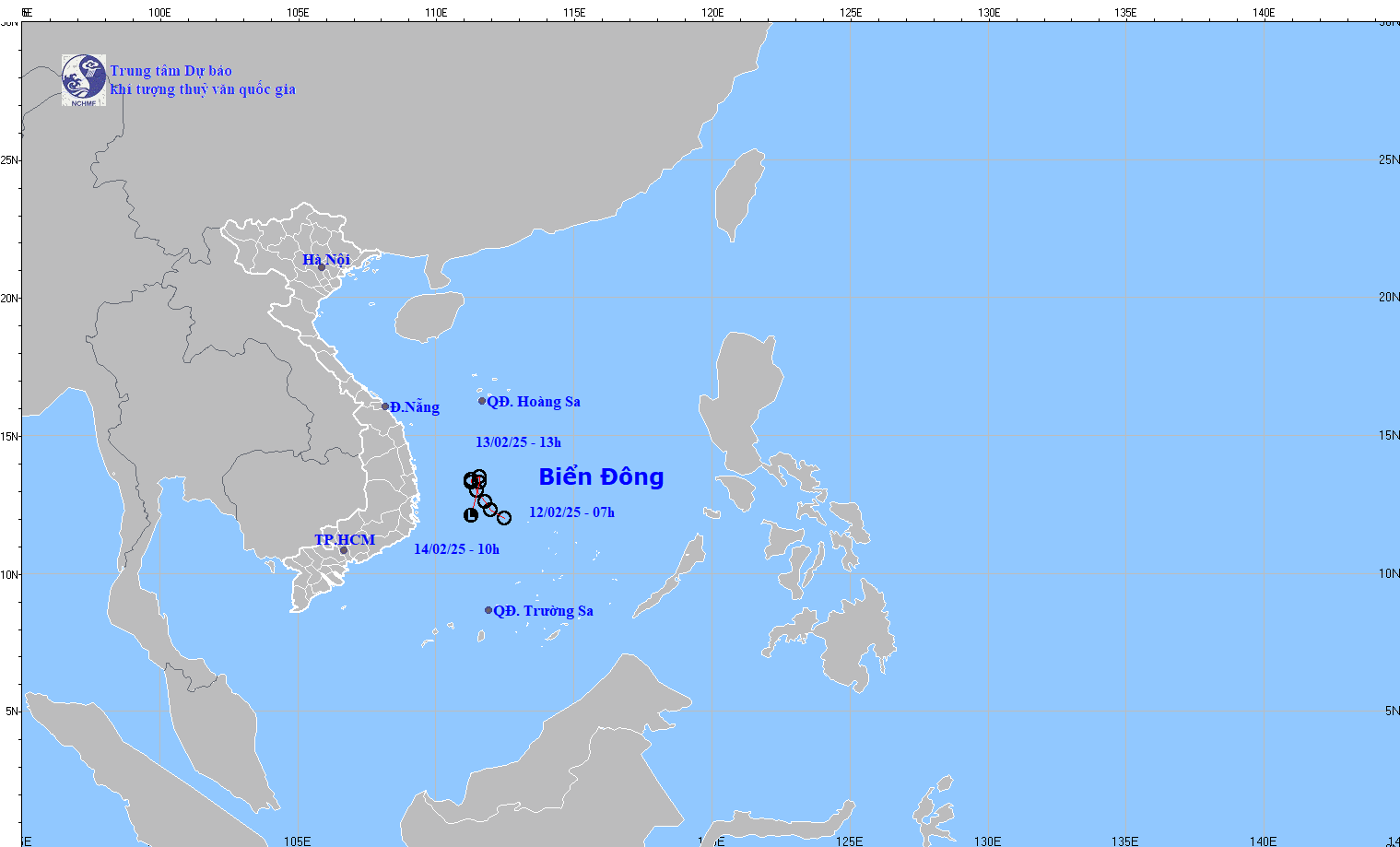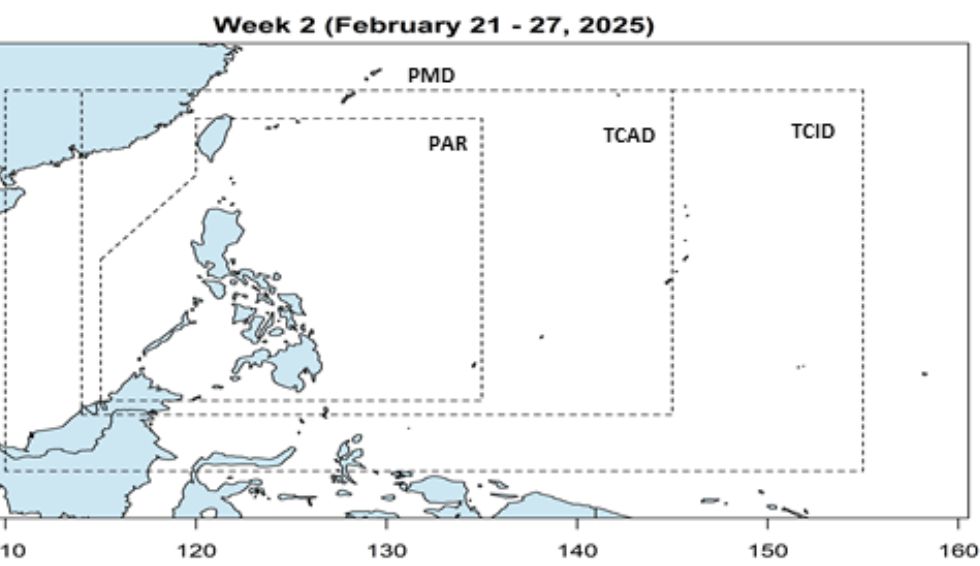The storm/low pressure forecast bulletin of the Philippine Atmospheric, Geophysical and Astronomical Services Administration (PAGASA) said that the low pressure area outside the Philippine Forecast Area (PAR) is unlikely to strengthen into a storm.
At 2:00 p.m. on February 14, the center of the low pressure was at about 11.4 degrees north latitude, 111.7 degrees east longitude, 285 km west of Pag-asa Island, Kalayaan, Palawan, Philippines.
The low pressure area we monitor outside the PAR will not affect any part of the Philippines, said PAGASA weather forecaster Grace Castañeda, adding that the low pressure will not enter the PAR.
We do not see any low pressure or tropical storm affecting the Philippines other than the low pressure, Castañeda stressed.
Experts also note that cuts and easterly winds will continue to bring rain to the eastern Philippines this weekend. The northeast monsoon will sweep north and central Luzon next week.
The Vietnam National Center for Hydro-Meteorological Forecasting also issued a final bulletin on the tropical depression on February 14, saying that the tropical depression had weakened into a low pressure area in the western sea of the central East Sea. It is forecasted that in the next 12 hours, the low pressure area will move south, traveling about 10km per hour, and its intensity will continue to weaken.

On the same day, February 14, PAGASA's storm forecast bulletin said that during the week of February 21-27, 2025, no low pressure or storm is expected to form in the East Sea or near the Philippines.
Previously, PAGASA forecasted that there would be only one or no typhoon affecting the Philippines in February.

The Philippines is one of the countries most severely affected by storms in the world. On average, the country experiences 15 to 20 typhoons per year, of which about 5 to 7 are severely destructive.
The reason is that the Philippines is located in the West Pacific typhoon belt, an area with strong tropical depression activity. Due to its geographical location, the country is often the first place where typhoons make landfall before moving into the South China Sea and mainland Southeast Asian countries.
The typhoon season in the Philippines lasts from June to December, peaking in August to November. Some strong storms are possible outside of this season.











